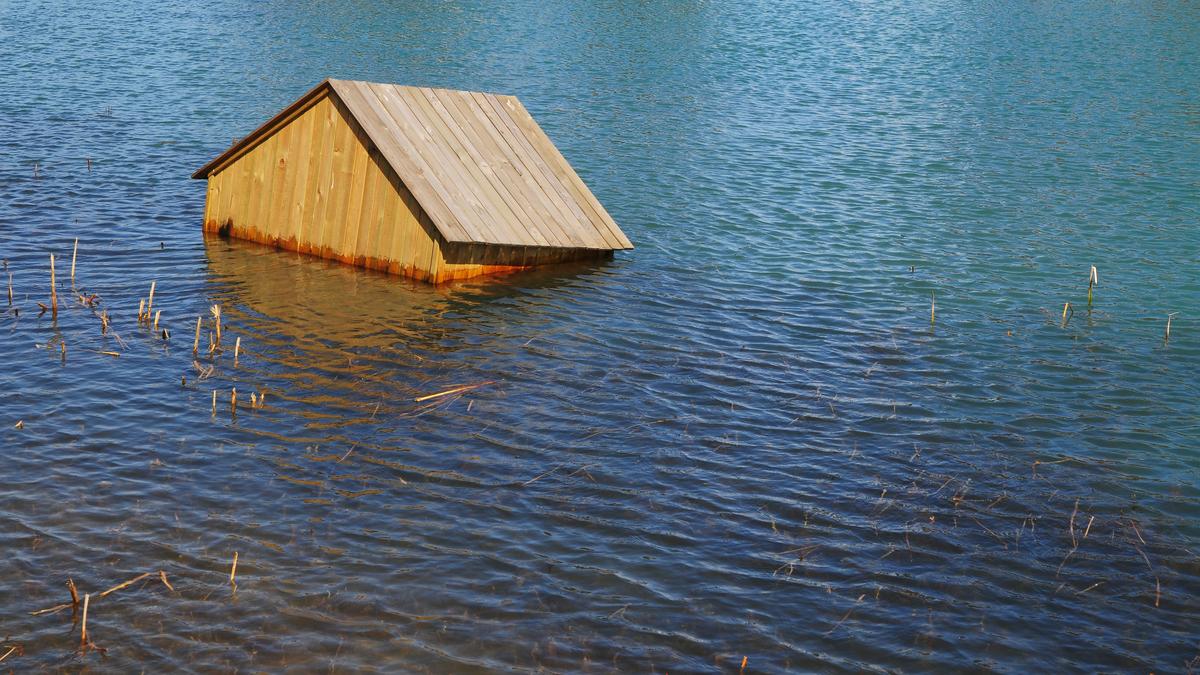Floods often mean a break with the past.
| Photo Credit: Getty Images
A few decades ago, on a rainy afternoon, my mother told me the story of the great flood of 1924 while I was making paper boats to float in the rainwater. “Long ago, during a monsoon season like this,” she began, “Kerala was hit by a great flood that transformed the entire State into a water world.” I listened with rapt attention, my eyes wide open with the curiosity of a seven year old.
According to her recollection, it was the year 1099 in the Malayalam calendar, and the month was mid-Edavam (June). The rains had been heavy for days, but she still went to her school at Palluruthy in Kochi, a mile from her home. By noon, the rain intensified, and the downpour continued. By evening, the school ground and surrounding areas were submerged in deep water, resembling a swollen river. Her father came to take her home in a small canoe, and she was enthralled by the cruise through the submerged village paths. When they reached their ancestral home, an old double-storey building, looked like a tiny island in the vast expanse of water.
She remembered taking refuge in the loft with her neighbours for three days and two nights without food or water. When the rain finally subsided and the floodwaters receded, they emerged to find their village devastated, with carcasses, damaged buildings, and destroyed crops. Many were dead and an equal number lost their livelihoods.
My father shared similar experiences from his childhood years. Though we experienced a similar flood in 2018, advance weather warning and relief and rescue operations helped us avoid a catastrophe.
The 1924 flood even affected Munnar, a hill station. The flood destroyed the Kundala Valley Railways, the first monorail system in India. The waters erased much of Kerala’s history in government records. Karinthirimala, a mountain in Munnar, had vanished.
As I write this, the rain shows no signs of relenting. This July marked the centenary of the great flood. The flood’s impact was so profound that it remains etched in the collective memory of Keralites.
tnvgopal@gmail.com

